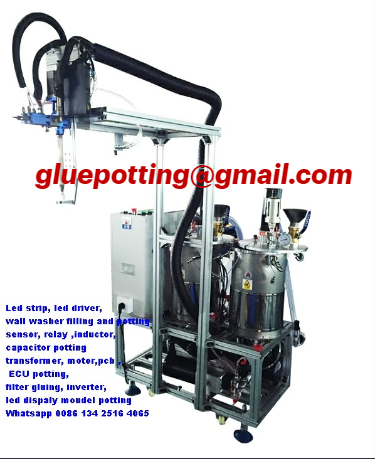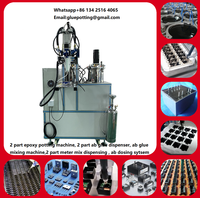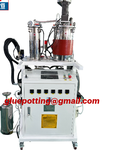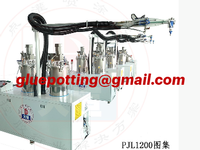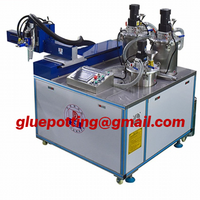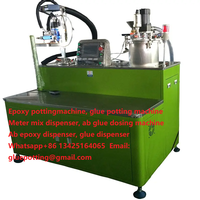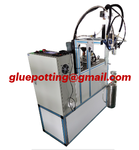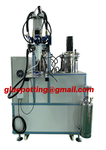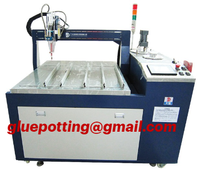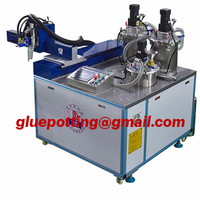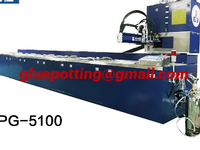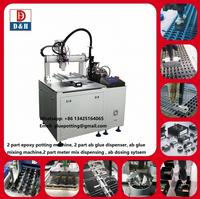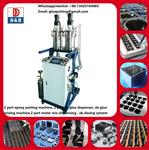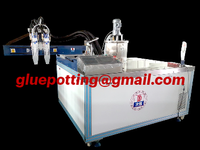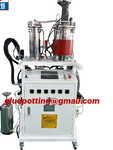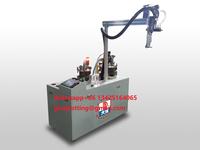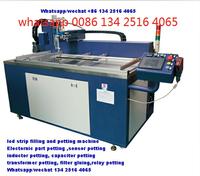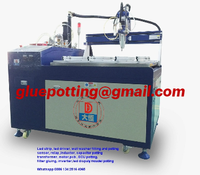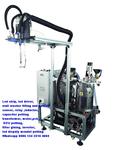2k Meter Mix Dispense Systems epoxy Meter Mix Dispense Systems silicone Meter Mix Dispense Systems
Company Information:
Name: |
2k Meter Mix Dispense Systems epoxy Meter Mix Dispense Systems silicone Meter Mix Dispense Systems |
Category: |
|
Offered by: |
|
2k Meter Mix Dispense Systems epoxy Meter Mix Dispense Systems silicone Meter Mix Dispense Systems Description:
Business that manufacture electronics or electronic components know how important it is to protect this sensitive technology from environmental damage. That’s where encapsulation and potting solutions come in. Today’s post will discuss the purpose of potting electronic components, what’s typically involved in this process, and how your own business may be able to improve your existing dispensing solutions.
What is the Purpose of Potting or Encapsulation?
Although potting and encapsulation are slightly different, they essentially serve the same purpose. These processes, which involve filling an electronic assembly with epoxy or other types of compounds, are meant to protect these components from moisture, corrosion, and vibration. Because electronic elements are quite delicate, they can easily be damaged by the environment in which they’re kept. Dust, debris, water, extreme temperatures, and other conditions can cause harm unless the electronic components are properly protected with potting solutions.
What is Involved in the Potting Process?
While encapsulation typically refers to dipping a device into a resin or other fluid to completely coat the unit, potting usually involves placing a device into a mold or case and then pouring the liquid compound over the top to completely cover it. With potting solutions, the case or mold will typically stay part of the finished unit. After the potting design is mapped out and the proper solution is selected, the mold can be made. Then, the electronics are encased in the potting solutions or compounds.
After that, the potting compound will need to cure. Curing refers to the amount of time it takes for the potting compound to reach its fully functional state (or to harden), which depends on the type of material being used. During the curing process, potting compounds may reach temperatures of 200 degrees Celsius (392 degrees Fahrenheit) or higher. Temperature cycling is often used to determine whether the potting compound is completely cured. If the performance of the compound is unaffected after these cycling tests, the compound can be considered suitable and the potting process can be considered a success. In other words, it can withstand extreme conditions and adequately protect the components inside from damage.
How Can Businesses Improve Their Potting and Encapsulation?
If you feel that your current potting or encapsulation processes are inefficient or produce inconsistent results, you may need to take a closer look at the equipment and at the compounds you’re using. It’s a good idea to discuss your needs with dispensing machine manufacturers and epoxy suppliers to ensure that you’re benefitting from the latest technology and from the compounds that will more adequately serve your needs. To learn more about our dispensing equipment and other related products, please contact us today.

Machine Congigurations
1. Working Mode: controlled by PLC module and MCGS touch screen.
2.High precision valve: high speed, glue off clean, no glue drawing, no dropping.
3. Core metering pump specially design for different material from low to high viscosities.
4. Mix glue A & B more evenly; no more or no less for agent B.
Working principle :
Compound materials A & B are kept in two tanks separately. There are two sets of metering pumps inside the machine for metering A and B resin by setting ratio, draining out material individually from tank A & B. Liquid A & B mix with each other in the mixer pipe and dispensed out according to the programmable data.
Tank system technology:

1. Stainless panel vacuum pressure tank which can bear negative pressure of inner tank .
2. Tank with motor stirrer that prevent the glue from sediment and keep the potting material in constant temperature.
3 Tank with top/ high /low liquid sensors that ensure alarm warning when liquid higher or lower the setting level .
4 Tank with vacuum degas (degas time can be set through touch screen), so the material can be re-feeding through vacuum negative pressure .
5 Tank with pressure releasing ball valve ; the bottom of tank reserved back-flow connector and river closure ball valve.
6 Tank with heater which can preheat materials to assure good flowability .
7 Tank with artificial feeding mouth that can be added glue appropriately by hand .
8 Tank with silica-dryer which can prevent material especially PU from crystallization .
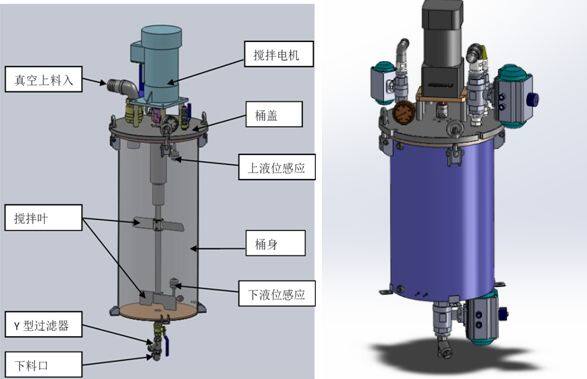
Pump technology

1. Two cylinder plunger pumps work by durable motors.
2.The biggest flow volume :24g/s,Repetition accuracy:0.2g.
3.Also Suitable for high viscosity glue: 50cps~35000cps.
4. Suitable for big flow dispensing or slight flow dispensing.
5. Suitable for frequent start and stop dispensing.
6. Anti-wear, Anti-corrosion, super long life time.

Valve technology

This valve is designed for any 2K (two-part) dispensing, encapsulation or potting applications. Controlled by compressed air, the balanced valve core design has integrated valve suck-back to eliminate unwanted material dripping and reduces product waste. Suitable for epoxy resins, silicone resins, acrylics, polyurethanes, and thermally conductive materials.
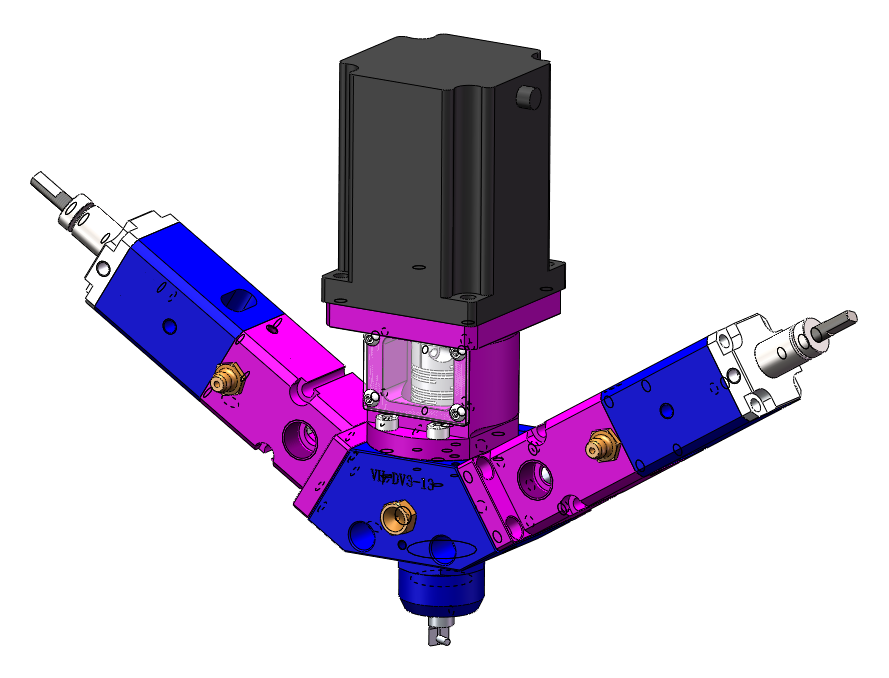
PLC operation Controlling System
1 Dispensing volume is controlled by the speed of pump's motors ; Glue speed adjustable within the speed range .
2 Machine with detecting function that detect the speed and running time of pumps to ensure the ratio reliability.
3 Adjustable gluing-out volume make sure glue A/B dispense out at the same time from glue valve to get better glue mixing effect .
4 Machine with gel resistance calculator , which prevent the mixture curing inside .
5 You can set single gluing-out and steady gluing-out function to meet up with your different process requirement .
6 Whole machine system and function is controlled by Panasonic PLC and MGCS touch screen .
7 Reserved PLC communication interface, which easy connecting with outside device .
8 Equipped with a safety lock to prevent staff from wrong operation .
![]()
Two component dispensing potting dosing system ,electronic potting and casting system ;
Epoxy resin electronic products machinery vacuum casting machine pu glue machine automatic ab glue machine adhesive machines
Our Automation specialize in different types of potting and dispensing system. No matter what your resin application requirements look like: we can do most of them in our fully equipped lab. We can handle 1- and 2-component polyurethanes, epoxies, acrylics, silicones, temperature, humidity and UV curing materials. They can be from low- to high-viscosity, filled or unfilled and even high abrasive for thermal conductivity.
More machine types and designs to suits for different application processes requirements
![]()
Potting&Encapsulation &Casting: electronics componnets , PCB board, Capacitor, power supply, transformer, ignition coil, reverse sensor,
circuit board, filter products ,underwater parts, electronic ballast ,aviation parts, aerospace parts....

2k Meter Mix Dispense Systems epoxy Meter Mix Dispense Systems silicone Meter Mix Dispense Systems was added in Sep 2023
2k Meter Mix Dispense Systems epoxy Meter Mix Dispense Systems silicone Meter Mix Dispense Systems has been viewed 41 times
20 More Products from Guangzhou Daheng Automation Equipment Co.,LTD :
